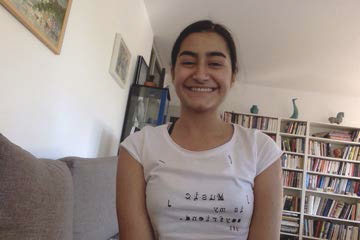School in Iran
In Iran there is an 8-year compulsory education, from 6 to 18 years.1 Public schools and universities are free. Private schools and universities may charge fees.2
In Iran, there is the option to send their child to preschool, then primary school, the so-called "ebtedahi" begins, it lasts 6 years. Thereafter, the secondary is for 6 years. After secondary school you can decide on a university degree.3,4 Different directions can be taken, there is the theoretical training and technical training.5 The theoretical training is to be equated with the German High School, while there is a great audit which is equally to the high school and qualifies for university. Craft training comes close to the high-school level. The education system in Iran has been reformed several times in recent years.6
Overview:
Preschool: Volunteering
Primary school: With the beginning of the 6th year of life, children must attend school. Elementary school lasts six years. Here are mainly mathematics, Geography, history, religion, language teaching.7
Secondary school: Depending on censorship and interest students choose different educational paths:
Theoretical training
- Mathematics and Technical Specialisation
- Natural Sciences Specialisation
- Literature and Social affairs
Technical and Craft Education
- Agricultural sciences
- Technical branch
- Engineering
Final exams (Concour): Used to qualify for university. Only the best graduates may be granted one of the limited study places (about 170,000).8,9
Rating system:
In Iran can be achieved in each test between 0 and 20 points. Here 0 is the worst and 20 the best score. To pass you need to at least 10 points.10,11
Conflict potential towards German school system:
- In teaching materials the woman conveys housewife, wife and mother and the man as breadwinner.12
- Segregation of gender in schools and universities. 13
- Lessons designed partially gendered, laundry & sewing classes for women and works & electrical classes for men.
- Sport is taught but largely neglected, your children can be easily exempted from physical education.
- Sex education is prohibited.
- State censorship of teaching materials.
- Strong religious assisted instruction, Koran classes from class 1.
- Concealment from the age of 9.
- Discrimination against other religions in schools, for example Sunnis.14
Common Knowledge
- Private universities are not highly regarded in the professional world, because there they go, "lazy", because parents pay for the training.
- In society there is resistance to the strict Islamic rules, especially at universities.15
- Face painting, nail painting, etc. is prohibited in school.
Paria - An Iranian pupil

When I was younger I thought there were only two professions in the world, namely, chemists and physicists. Since my father is a chemist, I wanted to be a physicist, so we differ somewhat, but I did not even know what is chemistry or physics. With the age of 10 I wanted to be a theater assistant, but soon after I came into contact with music and since I really want to work in the music industry, jazz or rock. Currently I'm working in a music high school in Tehran in the 11 class. I want to come to Germany to study for a couple for one year at the Institute of Music and Dance in Cologne.
1 http://www.uis.unesco.org/DataCentre/Pages/country-profile.aspx?code=IRN®ioncode=40535. 24.08.2016. 09:13.
2 L’Iran: http://www.wes.org/ca/wedb/iran/firedov.htm. 27.08.2016. 11:46.
3 Porsche-Ludwig M., Gieler W., Bellers J. (2013): Handbuch Sozialpolitiken der Welt: Politik: Forschung und Wissenschaft. Berlin:LiT Verlag. S.237.
4 Informationen zum Bildungswesen Iran. http://anabin.kmk.org/bildungswesen.html? tab=first&land=126. 27.08.2016. 12:25. 5 Gieler,Jürgen Bellers (2013) : Handbuch Sozialpolitiken der Welt: Politik : Forschung und Wissenschaft. LiT-Verlag:Berlin. S.237.
6 https://www.bq-portal.de/de/db/berufsbildungssysteme/5515. 24.09.2016. 10:55.
7 http://www.uis.unesco.org/DataCentre/Pages/country-profile.aspx? code=IRN®ioncode=40535. 24.08.2016 10:06.
8 Farhad Moradzadeh (2011): Iranische Jugendliche im Kulturkontakt: Eine Untersuchung über die relevanten Verhaltensformen im Kontext der Herkunftsfamilie. Universität Hamburg: Hamburg. S. 119.
9 http://citeseerx.ist.psu.edu/viewdoc/download? doi=10.1.1.456.1554&rep=rep1&type=pdf#page=263. S.265.!!
10 Umrechnungstabelle der Notensysteme. https://www.tf.uni-freiburg.de/studium/pruefungen/ anerkennung/anerkennung_umrechnungstabelle.pdf. 27.08.2016. 12:15.
11 Informationen zum Bildungswesen im Iran. http://anabin.kmk.org/bildungswesen.html? tab=first&land=126. 27.08.2016.12:19.
12 Hellen Vaziry (2006): Kongress Frauen in Naturwissenschaft und Technik. citeseerx.ist.psu.edu/viewdoc/download?doi=10.1.1.456.1554&rep=rep1&type=pdf#page=263. S. 268.
13 Ute Reichel (1999): Wissensproduktion und Wissensverlust am Beispiel der Landfrauenforschung in der Islamischen Republik Iran. Berlin: Humboldt-Universität. S.1.
14 Ramin S. Moschtaghi (2010): Die menschenrechtliche Situation sunnitischer Kurden in der Islamischen Republik Iran: Beiträge zum ausländischen öffentlichen Recht und Völkerrecht Vol. 212. Springer-Verlag: Berlin Heidelberg. S.395.
15 http://www.spiegel.de/unispiegel/studium/studentinnen-in-iran-bist-du-fleisch-oder-katera- 773067.html. 29.08.2016. 09:08.